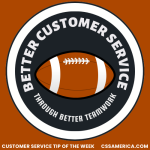Of all the industries we work with, the one that talks most about providing perks and benefits to its customers is pro sports. We’ve worked with NASCAR, MLS, the NBA, and a little bit with the NFL and the NHL.
And most of the teams or organizations will provide their season ticket holders, their account holders with perks. They’re doing this to help the fans feel special but also to engender some loyalty. Loyalty leads to retention and growth, and, therefore, the strategy is to provide perks to help drive long-term revenue.
If your organization is in healthcare or local government, if you’re in finance, education, manufacturing, retail, or some other key industry, there are still lessons to be learned from these sports perks. Here are some examples.
Sports clubs offer dedicated client service representatives to their account holders. Your organization could have a dedicated account rep for your customers, as well. Why tell the customer to call the toll-free number when they could call Janie instead?
Teams provide online account management for dedicated fans. Your organization could have a web portal (or sections of your website) dedicated only to your key customers. Premium access for your premium people!
Clubs have phone numbers for certain categories of account holders, prioritizing those calls. Could your company fast-track some process for your key clients?
Sports organizations allow free access to forward tickets to families and friends. You could provide free access to online webinars or other resources that may be valuable to your customers.
The clubs will offer single game tickets to season ticket holders before releasing them to the general public. When your organization launches a new service at your facility, you could provide an open house or first access to your longer-term clients.
Clubs offer complimentary tickets for some away games. Your organization could partner with local businesses to provide complimentary products to the customers.
Teams provide invitations to exclusive events. You could set aside a certain number of seats to grand openings or holiday events just for some key customers.
Perks and benefits can be useful tools in building loyalty and relationships. Use these examples from sports, and determine how to best apply them to your business to deepen relationships, retention, and revenue.
Sport Some Customer Perks.
Signup for FREE Tips! Contact Us More Resources for You Visit Our Home Page
























